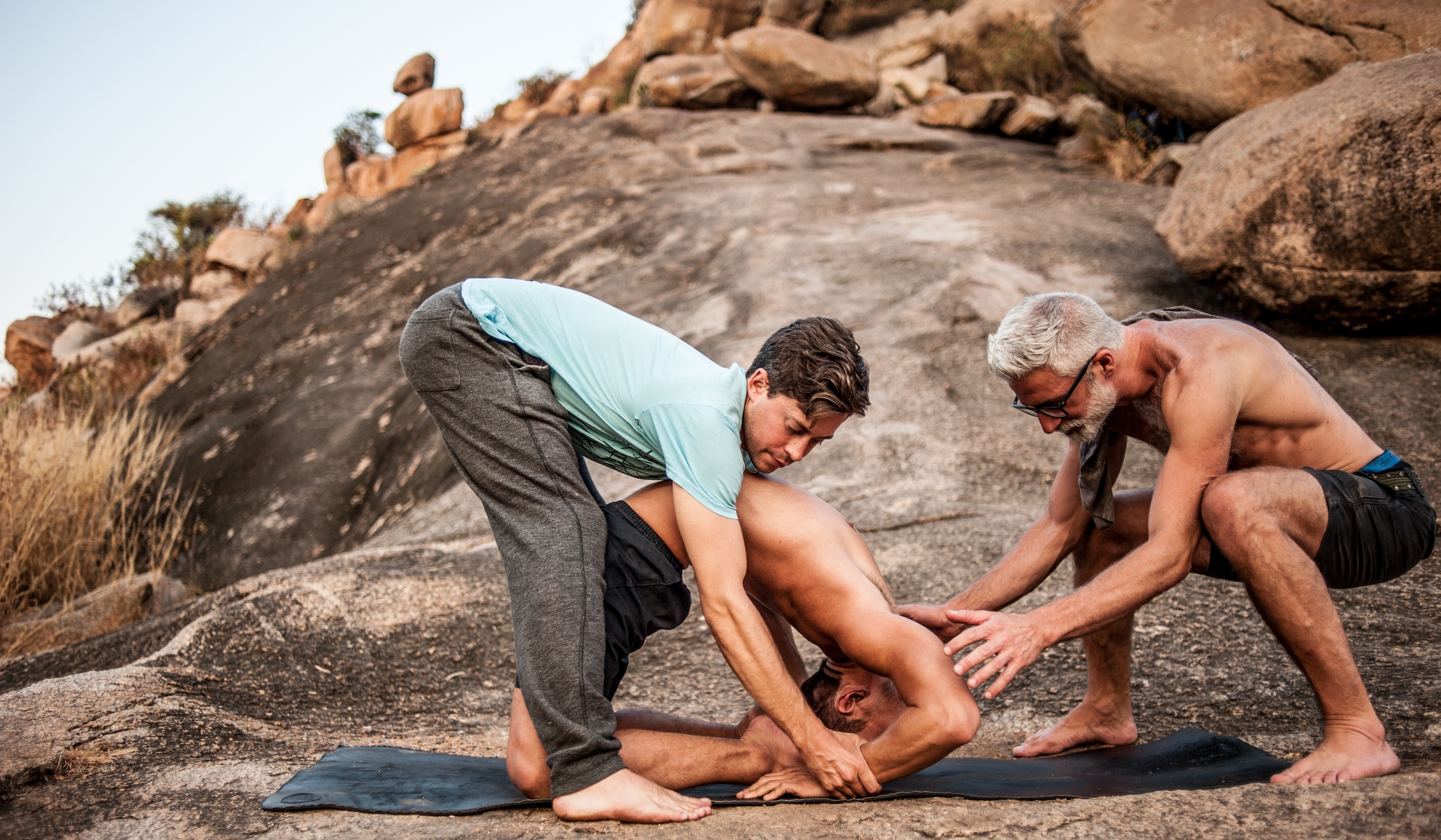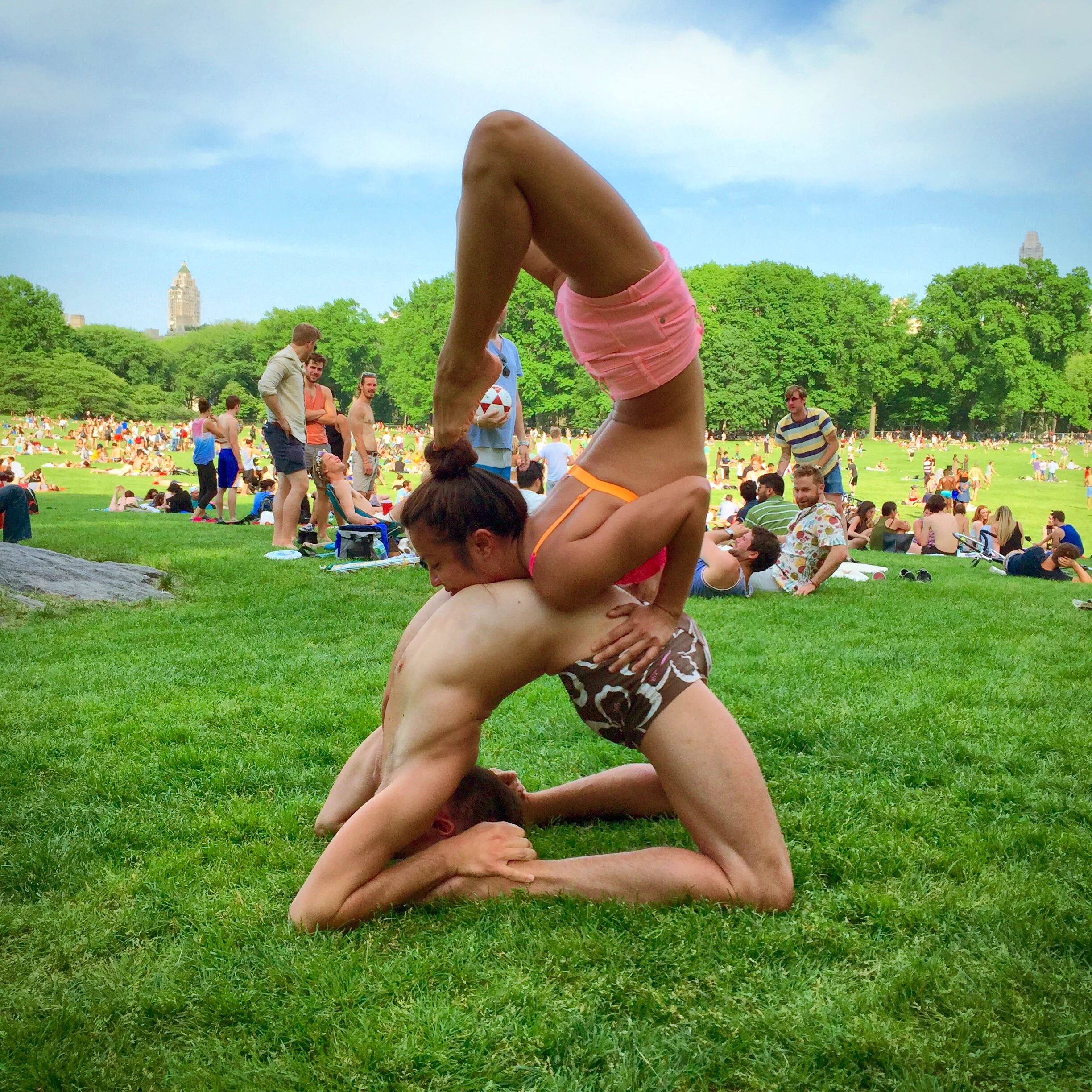The more I practice in the Ashtanga Yoga system the more I realize how un-special I truly am. Oh, I know that sounds harsh, but hear me out.
Ashtanga is a method and as such it has a foundation. This foundation is set on three pillars: The Breath, which includes ujjayi pranayama, uddyana and mula bandhas - Dristhi, the direction of the gaze - Asana, a position that is stable, firm, and spacious. These pillars are non negotiable. Whether you are a novice beginning practice or you’ve been drinking the Vande Gurunam kool-aid for 20 years, you must use ujjayi, you must engage your bandhas, you must limit your wandering gaze, and your postures must be stable and firm.
On top of this foundation you may build what you wish. Perhaps your practice emulates a grand castle with turrets and towers soaring to staggering heights, or maybe it’s more reflective of a humble, but warm home filled with light and love. Perhaps your practice is not a building at all, rather a jungle full of bright flowering plants and succulent fruits. Your grand creation doesn’t have to stay the same. You can change it throughout time, adding something here, taking away there, or you could demolish the whole thing and start over. As long as the foundation is intact – the breath, dristhi, and stable asanas – the possibilities are endless.
If there is a crack in the foundation something is going to give way sooner or later. Most probably things will break down slowly, almost unnoticeably, until something major occurs that cannot be ignored. There is no use trying to repair what is on top of the foundation if the foundation itself is flawed or incomplete. There is no escape, you will always find yourself back at breath, dristhi, and asana.
Building and maintaining a solid foundation is key for any practice. This goes for everyone. No one is special enough to avoid it - not you, not me, not the old man, not the pregnant lady, not the student with severe scoliosis, not the quadriplegic lying in a bed having their body parts moved by the teacher or therapist, not the girl whose arms are “too short” to do a jump back, not the guy with 6 bazillion sports injuries, not the hyper flexible former dancer, not the lady with a double hip replacement. The special people list with their special concerns is infinite. If the foundation of practice is not built with care and then given consistent attention we will injure ourselves.
Being an Ashtanga practitioner means you must be vigilantly strengthening and repairing your foundation. Too often, when we are injured, we look to the area of the injury for the cause and solution. Instead we should be analyzing the three pillars of our practice to discover what is giving us trouble. Is the breath becoming harried or uncontrolled during parts of the practice? Is the gaze wandering? Is the mind following the wandering gaze? Is each asana stable? Is everything firmly grounded and supported?
Specialness is a double edged sword. One side of the sword is I Can’t and the other is I Can. My arms are too short so I can’t jump back. My legs are too long so I can’t grab my feet in a forward bend. I’m too old so I can’t go beyond primary series. So on and so forth cometh the numbing tides of special reasons we simply can’t do certain things. Maybe you can’t do these things… yet. So? Maybe you will never be able to do these things. What’s it matter? None of these special issues prohibit us from continuing to shore up the foundational pillars of the Ashtanga yoga method. None of these special issues prohibit us from trying everyday, concentrating everyday, breathing everyday, building strength everyday, and everyday working to become better people than we were yesterday.
Then there are the I Can types. I tend to fall into this camp and we think we’re special because we are particularly good at something, or several somethings. This is near and dear to my heart so I will use myself as example. I Can backbend. I’ve always been good at backbending; it comes quite naturally to me. Once upon a time I was relishing my backbending practice. I would do extra backbends for fun and challenge myself to go deeper and deeper. Backbending was so effortless for me I didn’t really pay attention to bandhas, breath, dristhi, or stability – I just did what felt good. Then came kapotasana, spine-snapper pose is my pet name for it, and very quickly following a great deal of lower back pain. Backbending was no longer fun, in fact most things were no longer fun. What did I blame? Kapotasana, obviously. I was sure that the posture was the culprit. Problem was, I still had to do kapotasana everyday – that or quit, or voluntarily give up what I had learned of Intermediate Series (and no self respecting 25 year old I Can person would do that). My foundation was broken. I was in pain not because of a specific asana, but because I had built my grand palace of backbending on sand. The only thing to do was rebuild a foundation for my backbends. It was an annoying, painstaking, ego shattering process. I had to relearn everything. The greatest pain gleaned from this experience was not physical; it was the emotional pain of discovering I wasn’t special after all. I was just like everybody else. I too had to use breath, bandhas, dristhi, and stable asanas appropriately or I would weaken and eventually break.
I doesn’t matter who you are, you can practice Ashtanga yoga. You could be the most specialist person in the whole wide world and you can still do Ashtanga yoga. But be warned, if you take your practice seriously you will eventually realize how banal and normal you are. Once you realize that, once you are on the path to getting over yourself, then you have the chance to transform into someone truly special.

